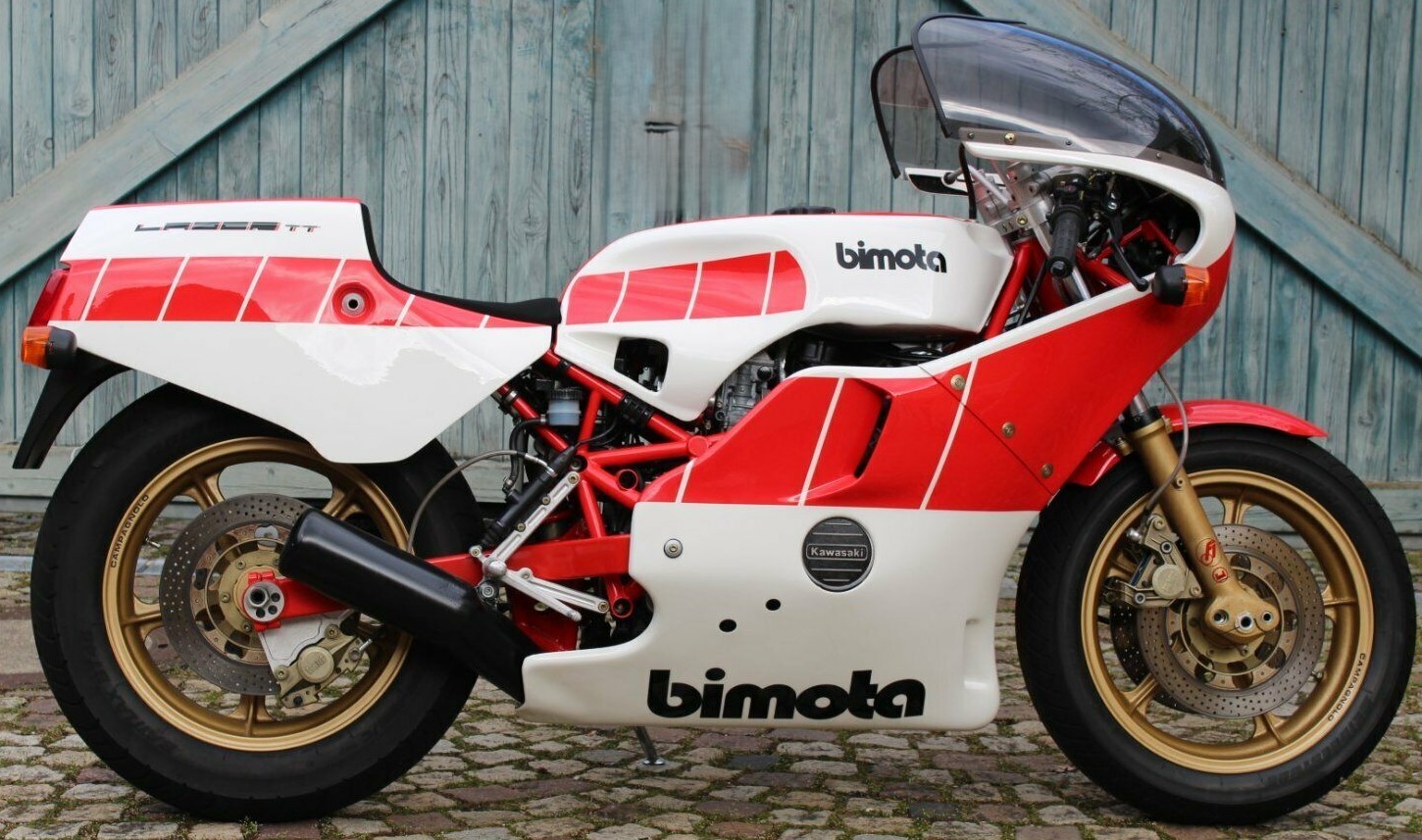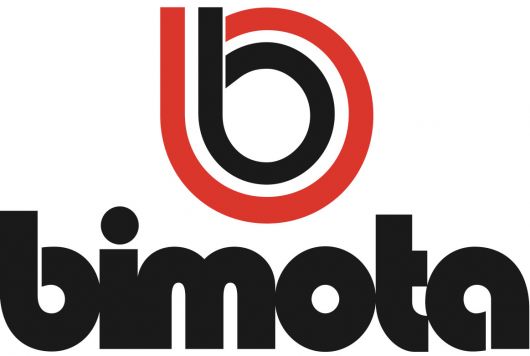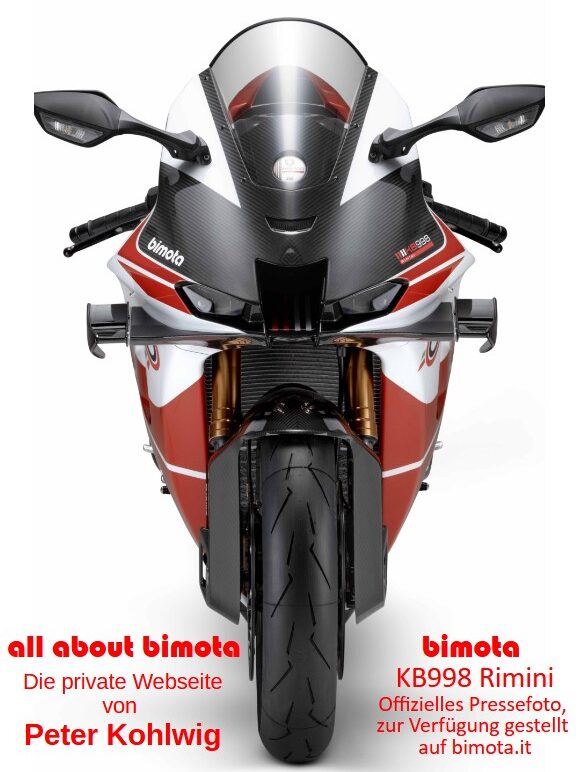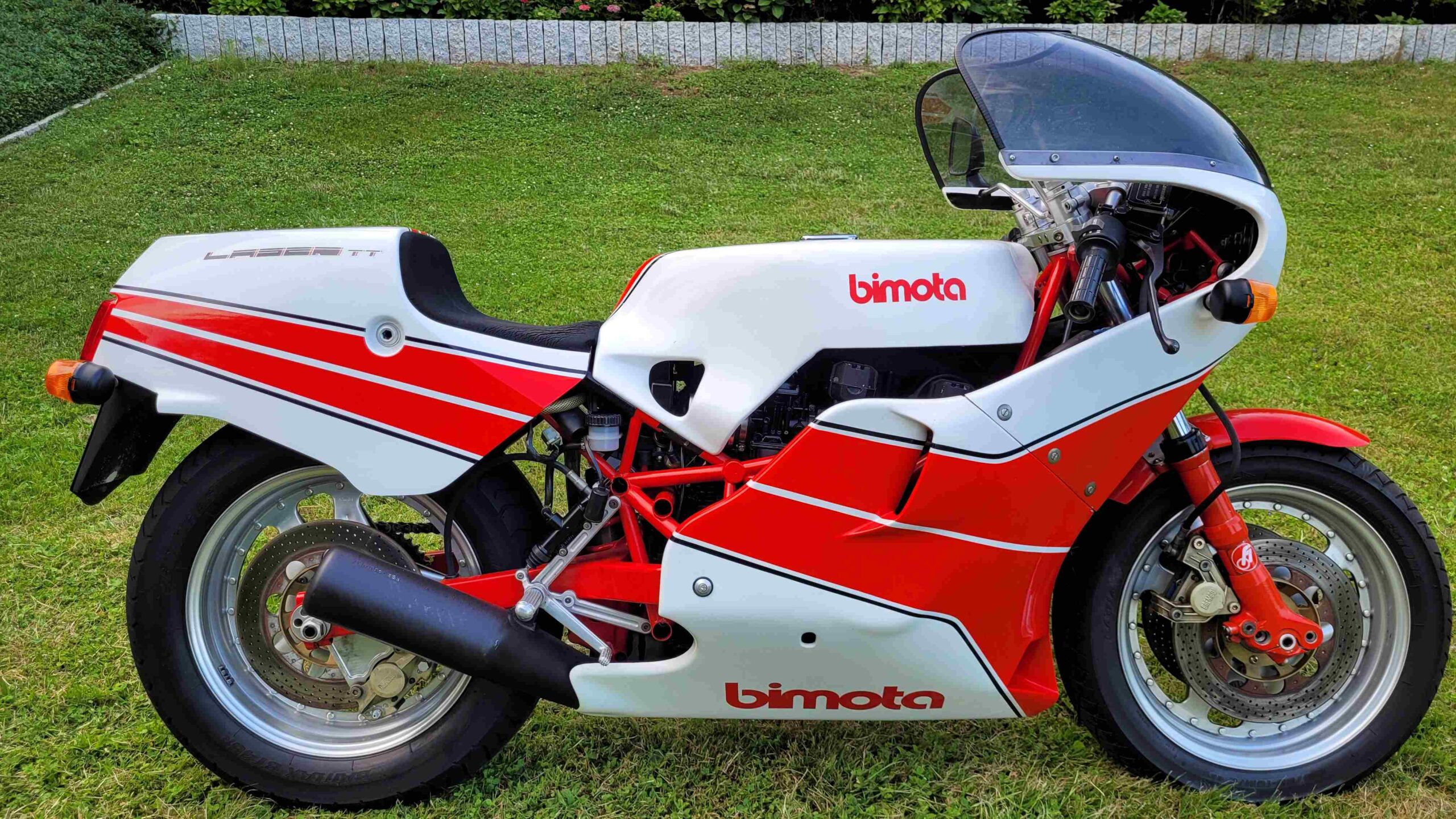
| Designer | Massimo Tamburini | Premiere | Köln 1980 |
| Production period | 1981 – 1984 | Production numbers | 177 thereof 112 as kits |
| Power | 37 KW (50 PS) | Displacement | 497 ccm |
| Topspeed | 201 km/h | Weight | wet 178 kg dry 165 kg |
| Price | 25.000 DM (1981) | Colours | 163 red / white 10 grey / red 4 diamond pattern |
| Technical basis | Kawasaki Z 500 | Kawasaki Z 550 | Kawasaki GPZ 550 |
Bimota stands for agile, sporty motorcycles. Following the two 1000 cc models, KB1 and SB3, the KB2 from the first series takes a different approach with just 500 cc and 50 hp. The price, around 5,000 DM higher than its larger siblings, indicates the effort put into this model.
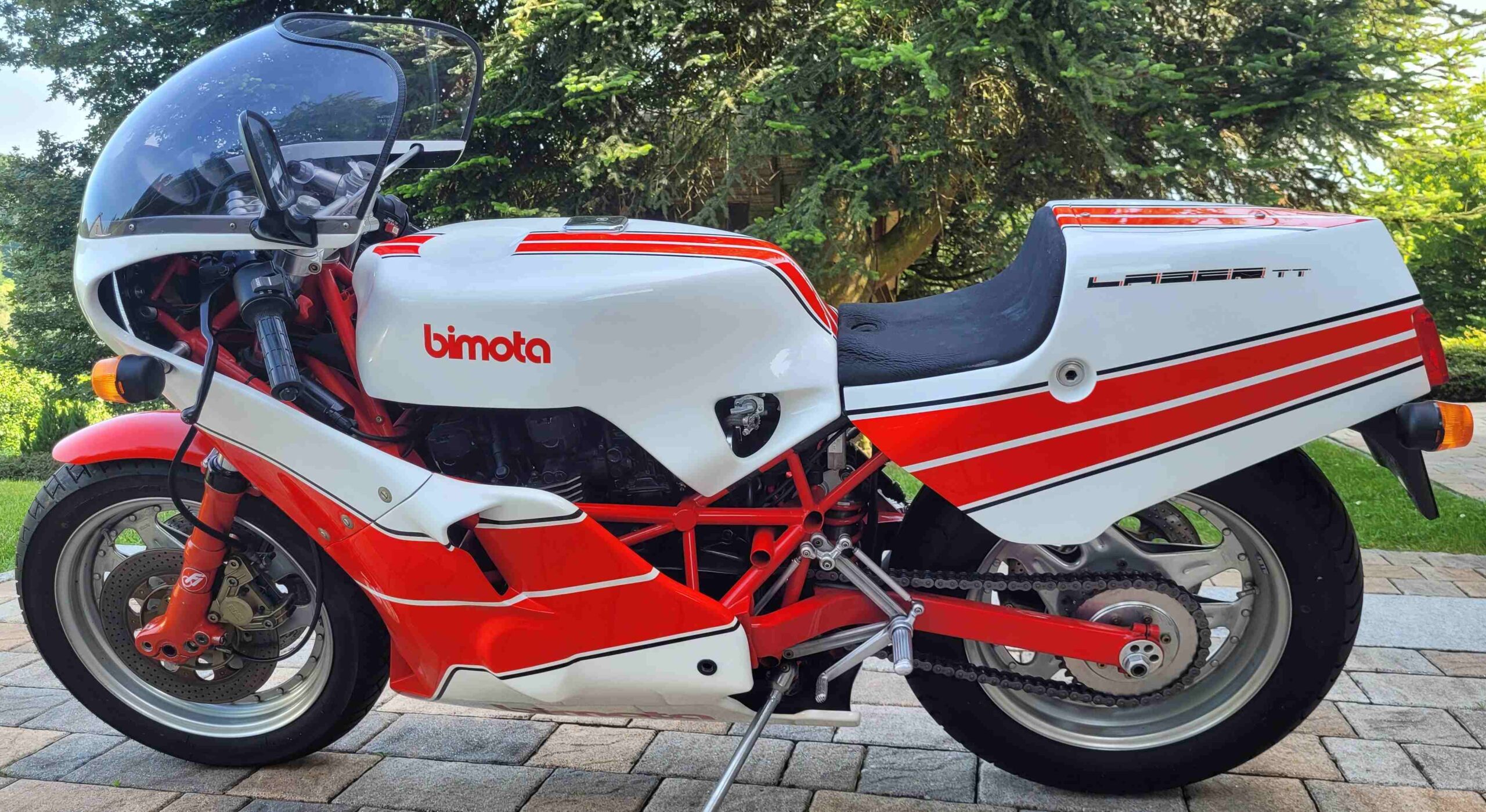
Originally designed by Massimo Tamburini as a base for Formula 2 racing (two-stroke engines up to 350 cc and four-stroke engines up to 600 cc), a street version was developed in parallel for economic reasons. This version, with lower power but significantly reduced weight, introduced a new level of agility.
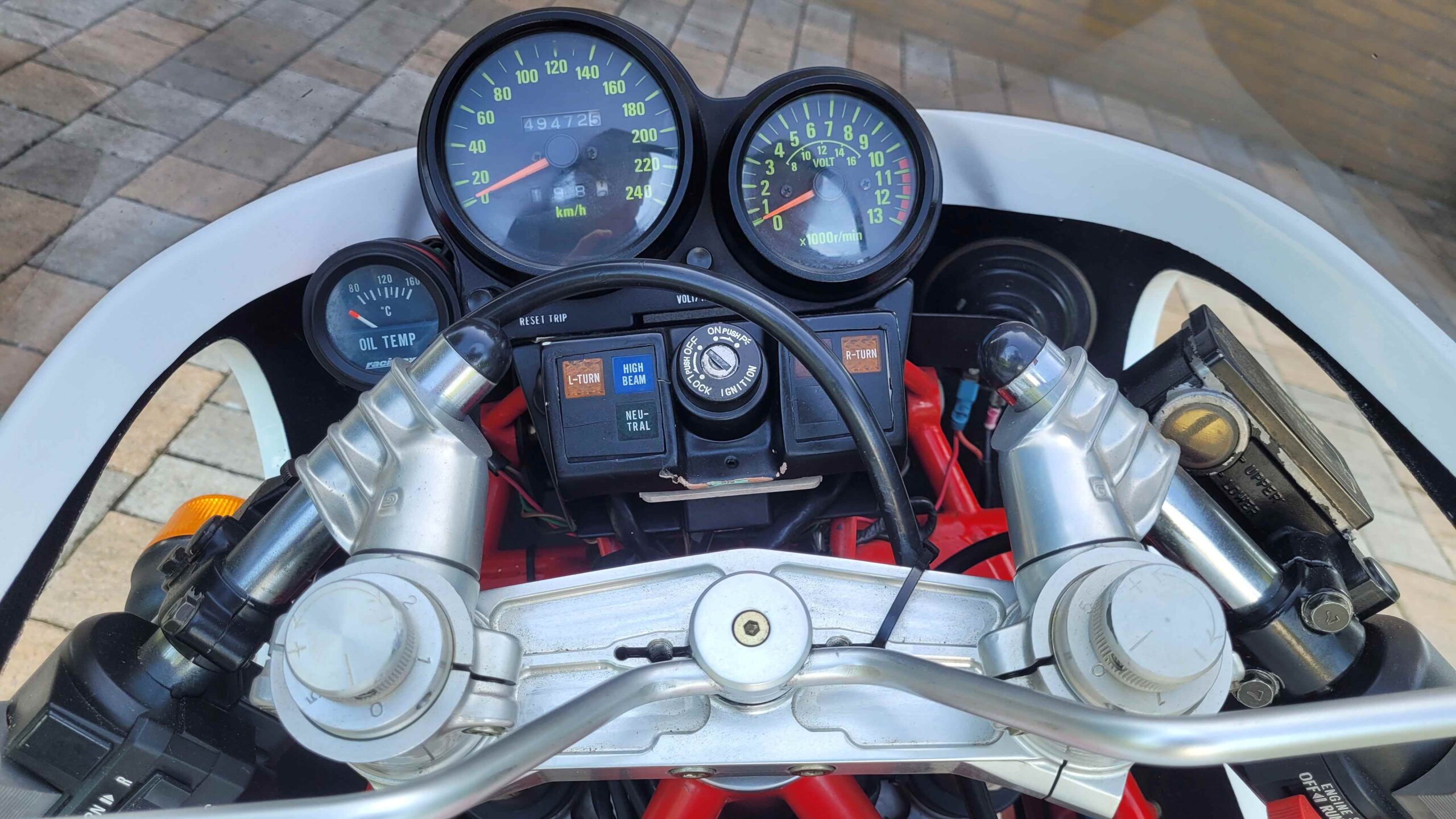
The KB2’s trellis frame is unique, consisting of over 50 straight tubes of varying diameters, welded together to connect the steering head and swingarm as rigidly as possible. The elaborate coaxial swingarm mount, known from the SB2 and SB3, is also found here. Additionally, the frame’s steering head section was redesigned. A network of straight tubes surrounds and reinforces it, making it extremely rigid—a solution Bimota continued using in later models. However, the complex coaxial swingarm mounting was implemented for the last time on the KB2.
The perfectly crafted frame, weighing just under 9 kg, combined with high-quality components, results in a fully fueled weight of only 178 kg—almost 30 kg lighter than the Kawasaki GPZ 550, from which the KB2 S takes its engine.

The premium chassis includes a 40 mm Forcelle Italia front fork with adjustable damping and quick-release axle clamps, listed alone at 3,000 DM in the accessories catalog. A de Carbon central shock absorber with adjustable compression and rebound damping, Brembo P08 Oro brakes with plasma-coated aluminum brake discs, and 16-inch magnesium wheels from Compagnola complete the high-end package. The KB2 was also the first street motorcycle to feature 16-inch tires.
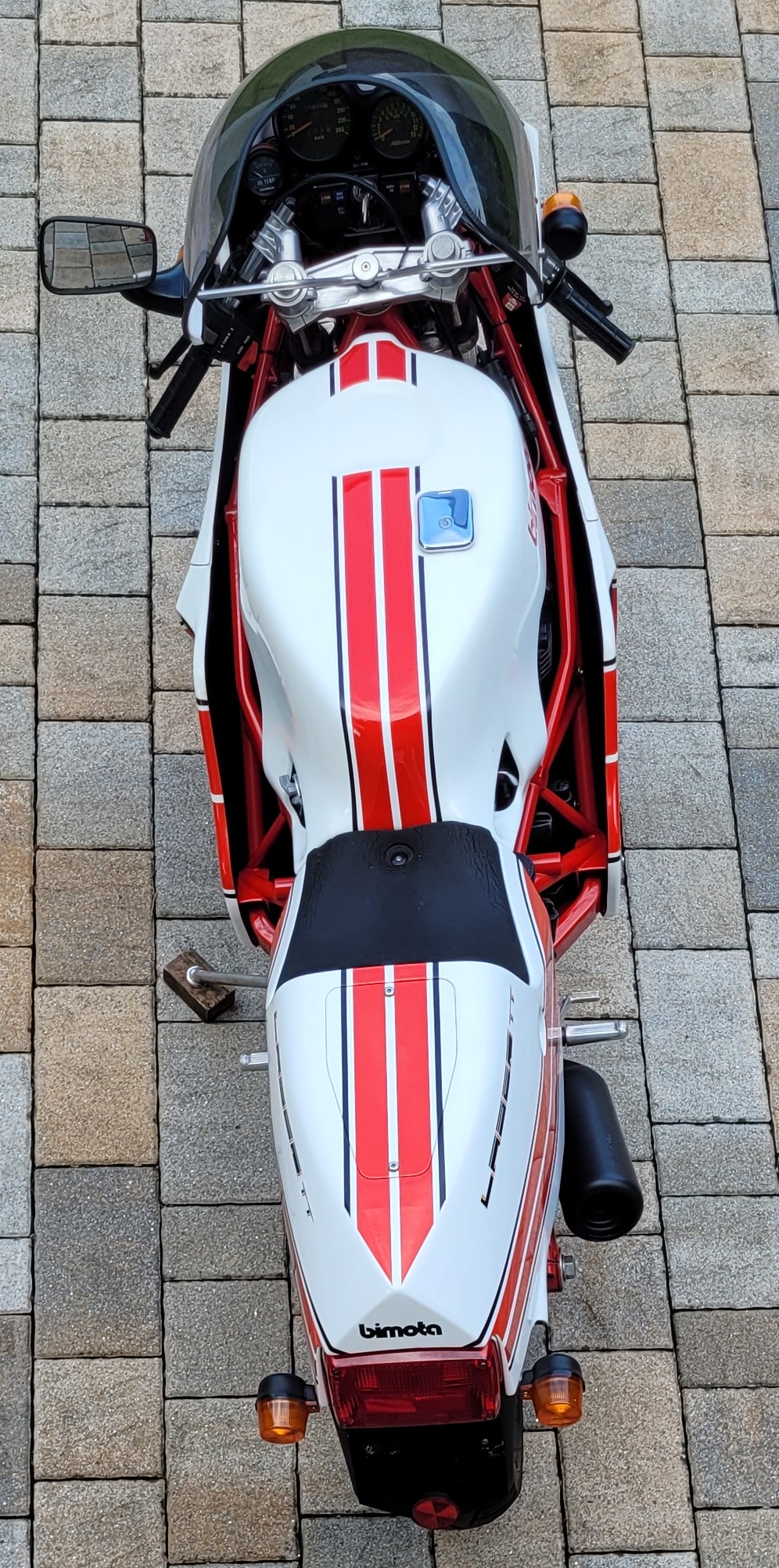
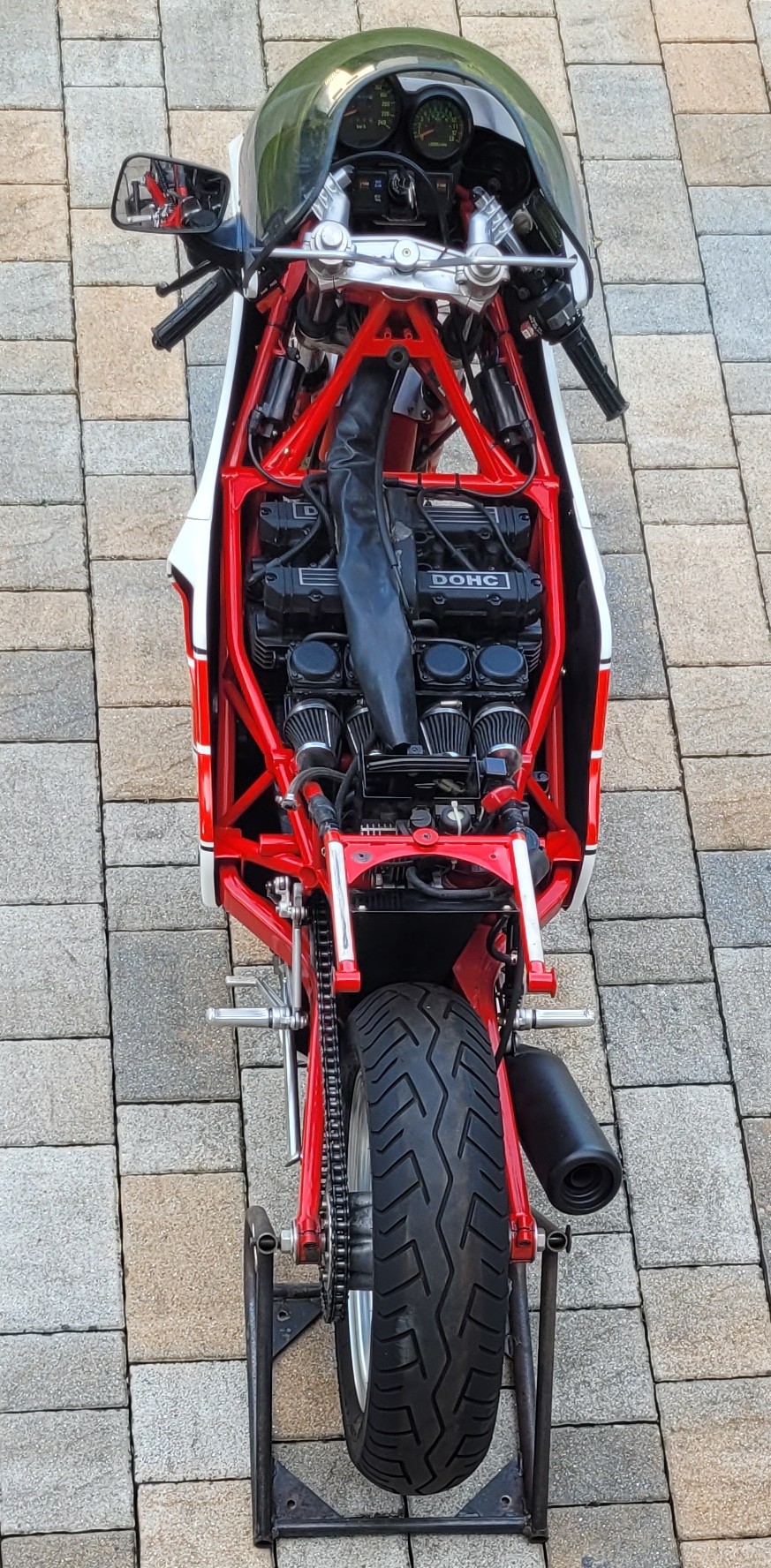
Not only are the chassis components high-quality and expensive, but all attachments are made from either milled or forged aluminum. The magazine Motorrad wrote in its 9/1981 issue:
„The KB2 trellis-frame construction presents itself in magnificent appearance. Besides the elaborately braced overall design, the perfectly executed welds and high-gloss paintwork contribute to its look. No doubt: Among the ranks of small, independent motorcycle manufacturers, Bimota produces the most visually appealing and best-finished models.“
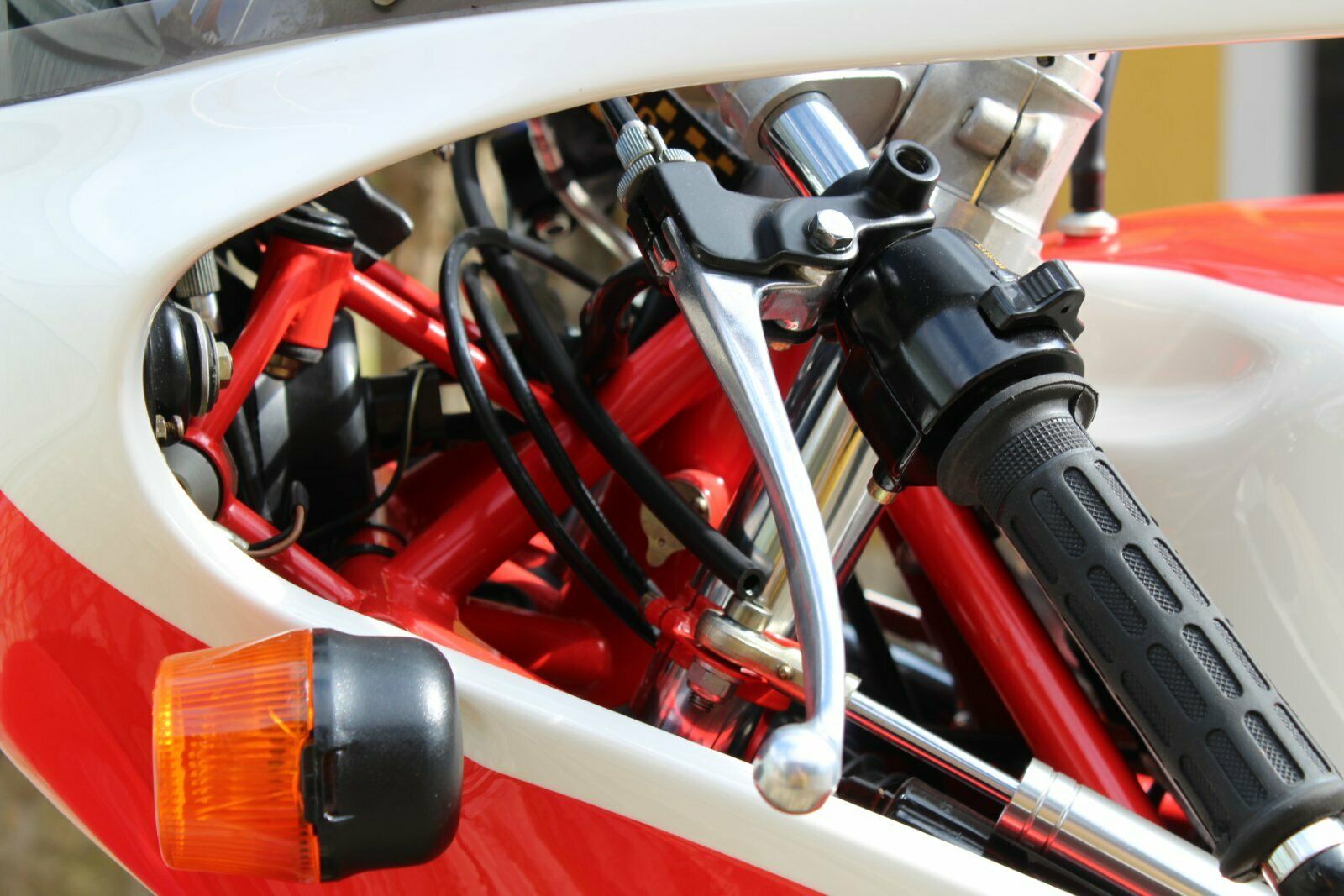
The KB2 was produced in three versions. In addition to the KB2 with the Z500 four-cylinder engine (37 units), there was the KB2 S (72 units) with the 550 cc engine from the Z550 or GPZ 550, and the KB2 Laser TT (62 units) with 550 or 600 cc, along with six pure racing machines. The most common paint scheme was the classic white with red stripes (163 units). Ten units were painted gray with red stripes, and only four were white with a red diamond pattern.
